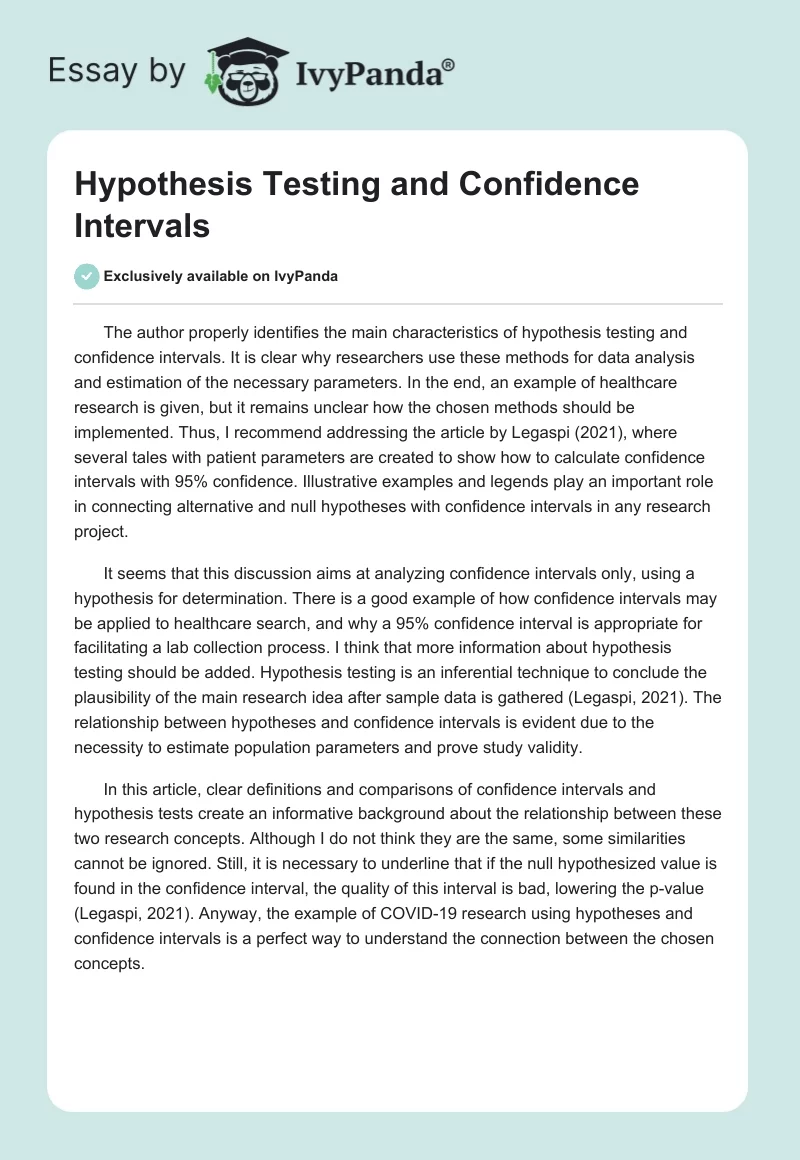The author properly identifies the main characteristics of hypothesis testing and confidence intervals. It is clear why researchers use these methods for data analysis and estimation of the necessary parameters. In the end, an example of healthcare research is given, but it remains unclear how the chosen methods should be implemented. Thus, I recommend addressing the article by Legaspi (2021), where several tales with patient parameters are created to show how to calculate confidence intervals with 95% confidence. Illustrative examples and legends play an important role in connecting alternative and null hypotheses with confidence intervals in any research project.
It seems that this discussion aims at analyzing confidence intervals only, using a hypothesis for determination. There is a good example of how confidence intervals may be applied to healthcare search, and why a 95% confidence interval is appropriate for facilitating a lab collection process. I think that more information about hypothesis testing should be added. Hypothesis testing is an inferential technique to conclude the plausibility of the main research idea after sample data is gathered (Legaspi, 2021). The relationship between hypotheses and confidence intervals is evident due to the necessity to estimate population parameters and prove study validity.
In this article, clear definitions and comparisons of confidence intervals and hypothesis tests create an informative background about the relationship between these two research concepts. Although I do not think they are the same, some similarities cannot be ignored. Still, it is necessary to underline that if the null hypothesized value is found in the confidence interval, the quality of this interval is bad, lowering the p-value (Legaspi, 2021). Anyway, the example of COVID-19 research using hypotheses and confidence intervals is a perfect way to understand the connection between the chosen concepts.
Reference
Legaspi, R. (2021). The relationship between hypothesis testing and confidence intervals. Towards Data Science. Web.


